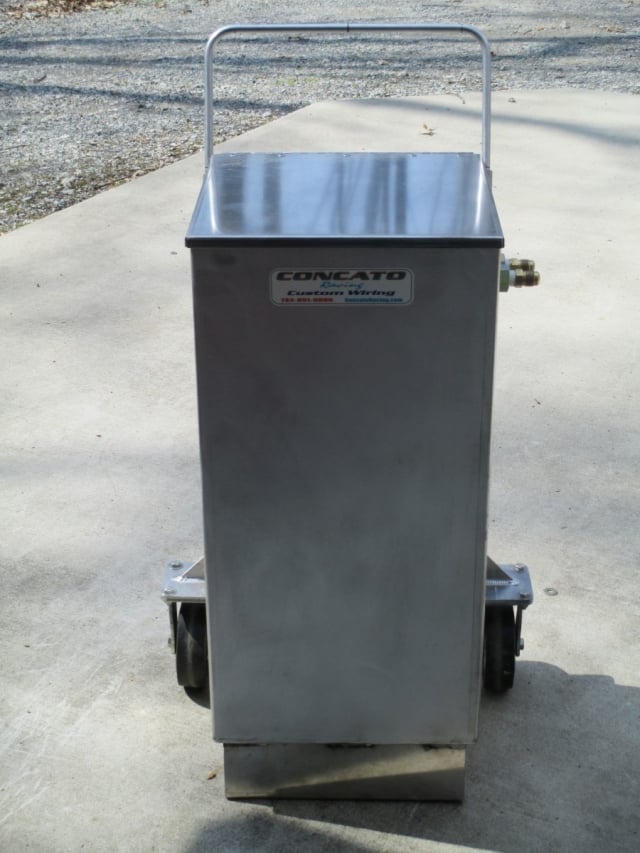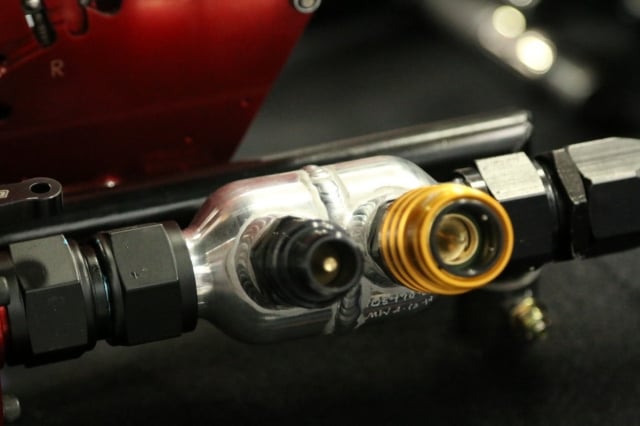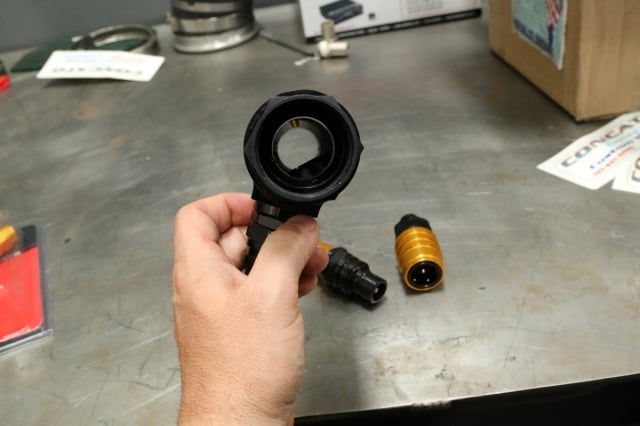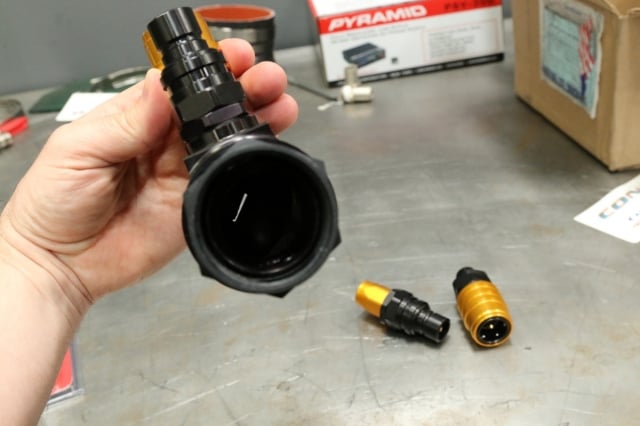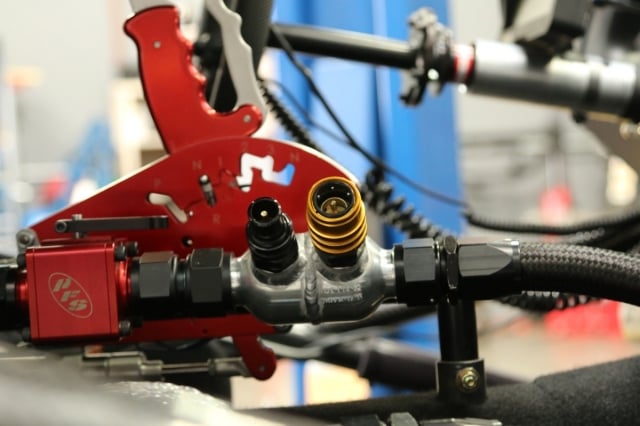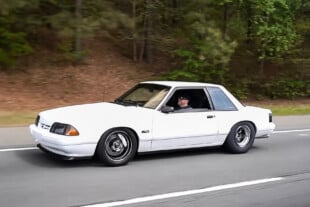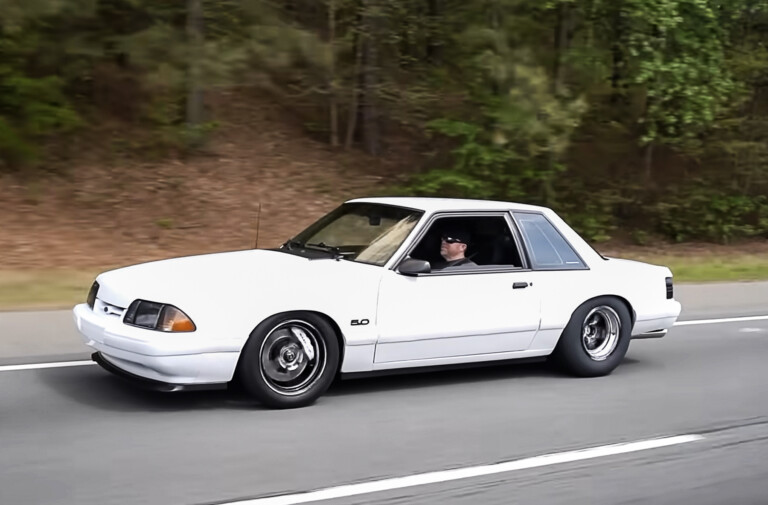Drag racing consistency comes down to the ability to control as many variables as possible during a typical race day. As we proceeded to get Project BlownZ ready for the 2014 race season, we realized that controlling each of those variables had to be high on our list of off season modifications.
With that in mind, a call was placed to Rich Concato of Concato Racing in New Jersey, where a plan was put into place for us to acquire one of the company’s Engine Chillers to assist us in our quest for consistency.
“The engine chiller allows you to cool the engine down at a much more rapid pace than just letting it air-cool. When you come back between rounds — especially if you’re bracket racing — you start building a lot of heat into the engine because it takes more time to cool the engine down as it’s getting warmer on every pass.”
“What this allows you to do is bring the car down to a certain temperature every single time. The trick is that it can cool the engine down to temperature in ten minutes,” says Concato.
The Engine Chiller is really a simple design – it’s an aluminum box that has a fluid transfer pump at the bottom – that you fill with an ice-water mixture. It connects to the cooling system and allows you to pump the cool fluids through the system, evacuate the hot water and replace it with a nice cold mixture.
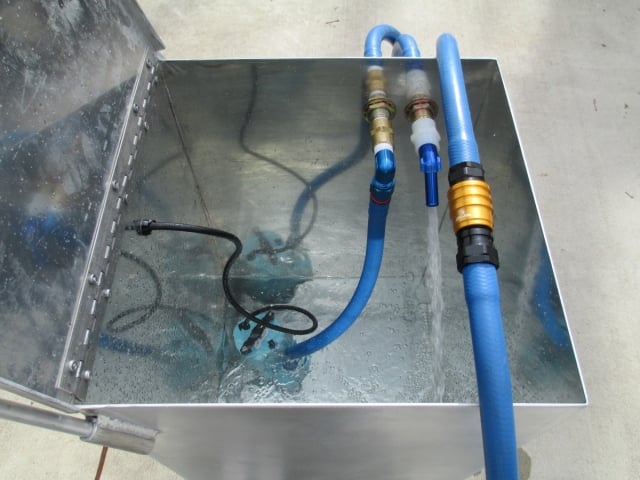
The chiller in operation – the ice water mixture is pumped out through the left hose and returns to the tank through the inlet on the right.
“In BlownZ, there’s an intercooler holding tank that’s also receiving the mixture. In most conventional racecars, it will go through the radiator or a fitting in the radiator hose itself, you pump the water through the engine, pull the hot water back into the tank and recirculate it with the ice water mixture already in the tank to bring the engine temperature down. Eventually the temperature between the ice water mixture and the hot water coming out of the engine equalizes out,” Concato explains.
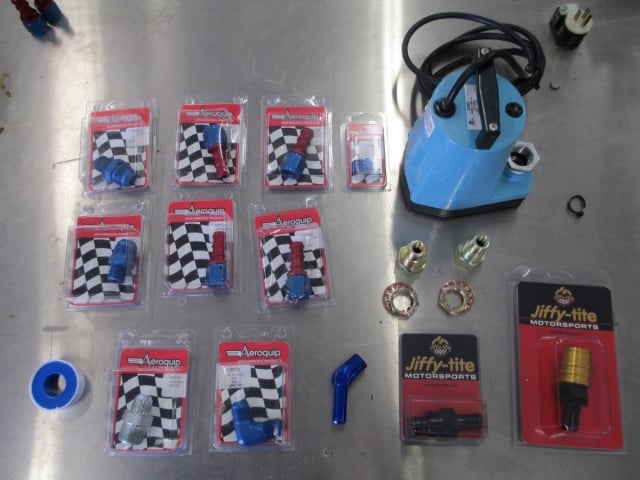
Some of the components used to create the Chiller including the 110V submersible pump seen at top right.
It’s not just about removing the hot water from the engine, as you’re also cooling the engine block and cylinder heads in the process. Depending on how you decide to set up the system, you can bring the engine temperature down to 40 or 50 degrees. Concato explains that by chilling down the engine this far, it allows you to head to the starting line and have the engine temperature in the 50-degree range with oil that’s warmed up already. “When you’re going to the starting line this low, you’re only going to cross the finish line at 100 degrees or so. In my personal car the engine only picks up about 40 degrees from one end of the track to the other,” he says.
The Chiller is offered two ways — with a 12V pump for racers that don’t have a generator setup, or with the standard 110V pump that plugs right into a standard outlet. Water is pumped out of the top, and comes out of the radiator and dumps right back into the box. A racer will see the most benefit by investing in a check-valve setup like we did on BlownZ to allow the mixture to run through the entire cooling system rather than just the radiator. Depending upon where the check valve is placed, the user may also need to run the water pump while the chiller is running to see the most benefit.
Left - The fabricated check valve installed in the car, close to the intercooler and next to the shifter. Right - The machined check valve under the hood. Note the quick-disconnect Jiffy-Tite fittings installed in each for connection simplicity.
Concato Racing can also customize the Engine Chiller for a customer, as he did for us. “I can make the tank smaller or larger to account for the customer’s requirements. The normal capacity is 22 gallons, which is the largest one I’ve seen on the market. I feel like the larger tank allows you to bring the temperature down at a more regulated rate. The one I built for BlownZ is 29.2 gallons, and we built it that way to account for the displacement of the intercooler as well,” he says.
To enhance our system, we added a setup using a pair of check valves from C&R Racing, which allows us to hook up the engine chiller and close the water flow when water is added through the chiller. This forces the water to move through the chiller and then through the cooling system.
The first check valve assembly, used inside the car and mounted next to the shifter, is C&R’s fabricated check valve [PN 70-11004], which is plumbed to the intercooler and is constructed from CNC-machined and black-anodized aluminum.
The second valve assembly [PN CR-UC-BPA0000] was used under the hood and plumbed into the engine’s cooling system. It’s hand-fabricated from aluminum and features -16AN male outlets at each end to help us simplify the plumbing process into our cooling system.
Check valve open versus closed. Big flow here, to assist in maximum cooling in a minimum timeframe.
To simplify the entire process of hooking up the chiller in both positions, we went straight to the Jiffy-Tite Motorsports catalog to hook up with some of their quick-disconnect fittings. These connect and disconnect without any tools except your paws, so make sure you wipe the grease off first! They are built from 6061-T6 aluminum, use brass valves and stainless-steel ball bearings at the connection point and can replace any fitting in any location as long as you’ve got the room for it. They leak zero water when disconnected, which is a big selling point for us — we don’t want to wreck BlownZ’s brand-new interior.
Each check valve in place.
In our application, we needed a pair of -8 ORB-to-male disconnects [PN 52108] and a pair of -8 ORB-to-female quick disconnects [PN 51108], along with a pair of socket caps [PN MS5000P] and plug caps [PN MS5000P] to close off the QD openings when not in use.
We used the chiller most recently when racing BlownZ at the NMCA West’s Pomona event, where we found a sweet reduction in water temperature to 55 degrees in less than ten minutes. In the process, it consumed a 20-pound bag of ice during each cooling session, but that’s cheap insurance to minimizing engine temperature between rounds.




